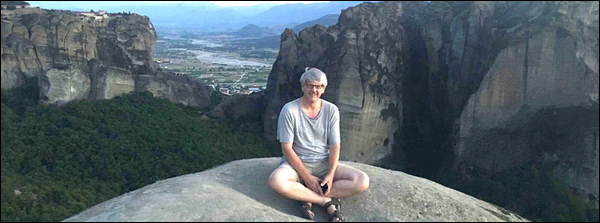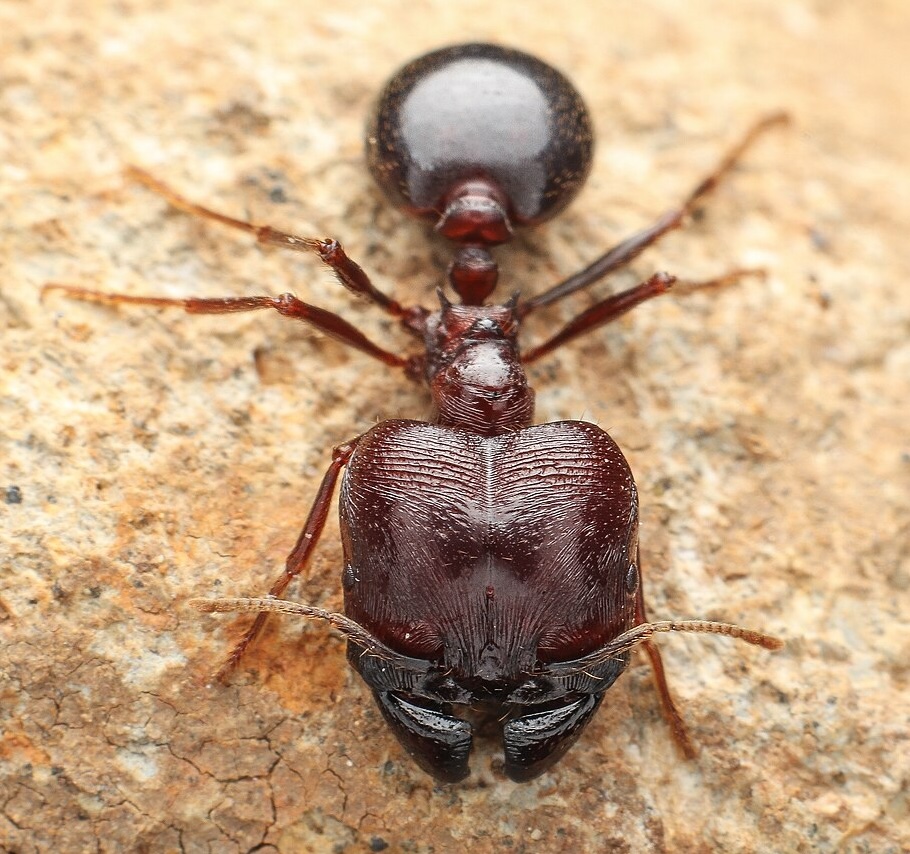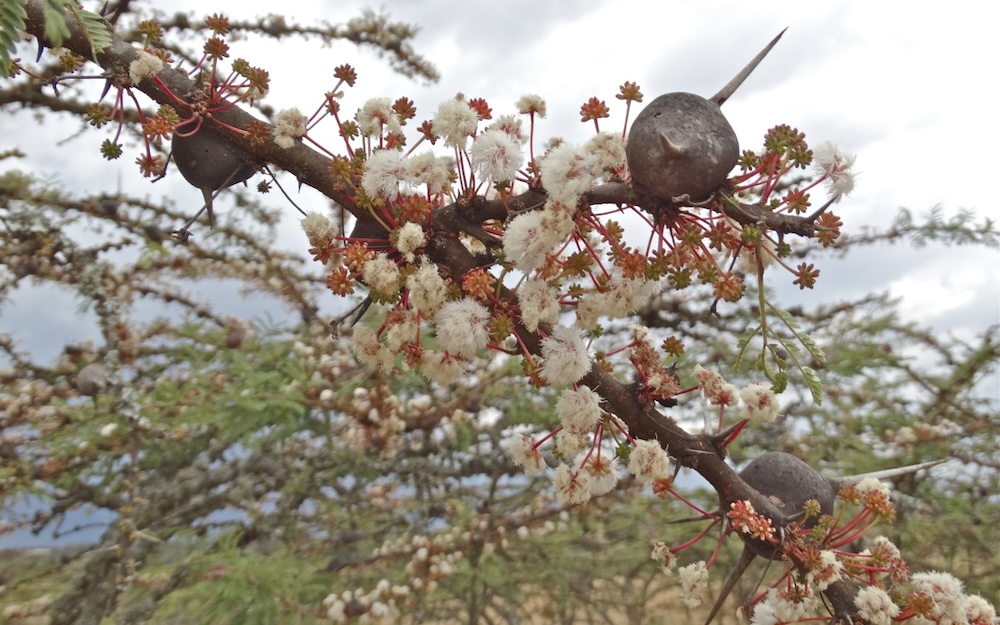Lions, Elephants, Zebras, Buffalo, Ants & Whistling Thorn Trees

“The ant altered everything that was evaluated, including the dynamics between the largest terrestrial animals on Earth and the structure of the plant community. Along the way, the tiny, mighty ant has demonstrated—again—that we are one. It has also shown that when a plant loses protection from an ant with which it evolved through natural selection, the resulting cascade of consequences is unexpectedly horrific.”—Dr. Guy McPherson
Planetary Hospice
By Dr. Guy McPherson

“Toe bone connected to the foot bone/Foot bone connected to the heel bone/Heel bone connected to the ankle bone/Ankle bone connected to the leg bone/Leg bone connected to the knee bone/Knee bone connected to the thigh bone/Thigh bone connected to the hip bone/Hip bone connected to the back bone/Back bone connected to the shoulder bone/Shoulder bone connected to the neck bone/Neck bone connected to the head bone/Hear the word of the Lord.”—from “Dem Dry Bones,” by author-songwriters James Weldon and J. Rosamond Johnson.
BELLOWS FALLS Vermont—(Hubris)—November/December 2024—A headline in Popular Science of 25 January 2025 reads: “Invasive ants leave lions scrambling for prey on the savannah in an ecological chain reaction.” And here’s the subhead: “One insect has led to a cascade of consequences.”
The opening paragraph, citing a renowned peer-reviewed journal, provides an overview: “Lions, elephants, zebras, buffalo, ants, and trees are all locked in an intricate ecological web in one Kenyan nature preserve. But that web is unraveling as a small invader disrupts the natural balance of things, according to a study published on January 24 in the journal Science.”
The small invader mentioned in the article is a species of ant. Specifically, an aggressive and predatory species called the big-headed ant is displacing the native acacia ants. The native ant species defends the whistling-thorn acacia trees, which are the most common woody plant at Ol Pejeta Conservancy, a protected reserve in Kenya.
The spread of the nonindigenous big-headed ant has triggered a domino effect that leaves lions less able to hunt their primary prey, zebras. As a result, the lions are forced to pursue buffalo, which are larger and more dangerous prey. Loss of habitat for birds and alterations of the soil likely are occurring as well.
Again, the enormous and important results stem from a nonindigenous species of ant. This is yet another example demonstrating that we are one. The we in this case ranges from elephants and buffalos to ants, and probably even further. The nitrogen-fixing native acacia species is declining, with negative implications for soil properties such as productivity and texture. Terrestrial ecosystems depend heavily on soil properties. A reduction in the most dominant species of woody plant, especially when that species fixes nitrogen, is critical to the continued well-being of all other species at Ol Pejeta Conservancy.
Ol Pejeta Conservancy is an important sanctuary. The largest black rhino sanctuary in East Africa, it is home to the two remaining northern white rhinos, both of them female. It is the only place in Kenya to see chimpanzees, in a sanctuary established to rehabilitate animals rescued from the black market.
I turn now to the peer-reviewed paper in Science. Published on 25 January 2024, the paper was written by 20 scholars. Titled Disruption of an ant-plant mutualism shapes interactions between lions and their primary prey, the paper includes an Editor’s summary.
This summary states: “Human global activities have led to the movement of species from their origins to distant sites across the world. The influence of these displaced species on the existing ecology of their new location can vary from damaging to positive, and many of their impacts may be much more subtle than one might predict. For example, the big-headed ant, originally described in Mauritius, has spread throughout much of the subtropical and tropical world. [The article above has] characterized how its presence at the Ol Pejeta Conservancy in Kenya disrupted a mutualism between native ants and acacia trees that led to increased herbivory by elephants and ultimately a shift in lion prey species from zebra to buffalo.”
A mutualism is a relationship in which both species are benefited. A common example is plant-pollinator interactions. Bees collect nectar from flowers to make honey and therefore feed themselves. This activity provides a benefit to the plants by pollinating the flowers. The pollinated flowers allow for reproduction and therefore the continued existence of the plant. The ant-plant mutualism described in the current study has been altered by the invasion of a nonindigenous species of ant, with impacts on the large predators, structure of the plant community, and soil properties.

The Abstract of the peer-reviewed paper in Science includes this information: “Mutualisms often define ecosystems, but they are susceptible to human activities. Combining experiments, animal tracking, and mortality investigations, we show that the invasive big-headed ant (Pheidole megacephala) makes lions (Panthera leo) less effective at killing their primary prey, plains zebra (Equus quagga). Big-headed ants disrupted the mutualism between native ants (Crematogaster spp.) and the dominant whistling-thorn tree (Vachellia drepanolobium), rendering trees vulnerable to elephant (Loxodonta africana) browsing and resulting in landscapes with higher visibility. Although zebra kills were significantly less likely to occur in higher-visibility, invaded areas, lion numbers did not decline since the onset of the invasion, likely because of prey-switching to African buffalo (Syncerus caffer). We show that by controlling biophysical structure across landscapes, a tiny invader reconfigured predator-prey dynamics among iconic species.”
That bottom line is critical: “We show that by controlling biophysical structure across landscapes, a tiny invader reconfigured predator-prey dynamics among iconic species.” Not only were predator-prey dynamics altered, but negative effects were manifest on plants and soils.
I turn again to the introduction of this short essay: “Lions, elephants, zebras, buffalo, ants, and trees are all locked in an intricate ecological web in one Kenyan nature preserve. But that web is unraveling as a small invader disrupts the natural balance of things.” The small invader in this case, the tiny ant, has disrupted predator-prey relationships, the plant community, and also soil properties.
The ant altered everything that was evaluated, including the dynamics between the largest terrestrial animals on Earth and the structure of the plant community. Along the way, the tiny, mighty ant has demonstrated—again—that we are one. It has also shown that when a plant loses protection from an ant with which it evolved through natural selection, the resulting cascade of consequences is unexpectedly horrific.
![]()
To order Dr. McPherson’s books, click the cover images here below:
